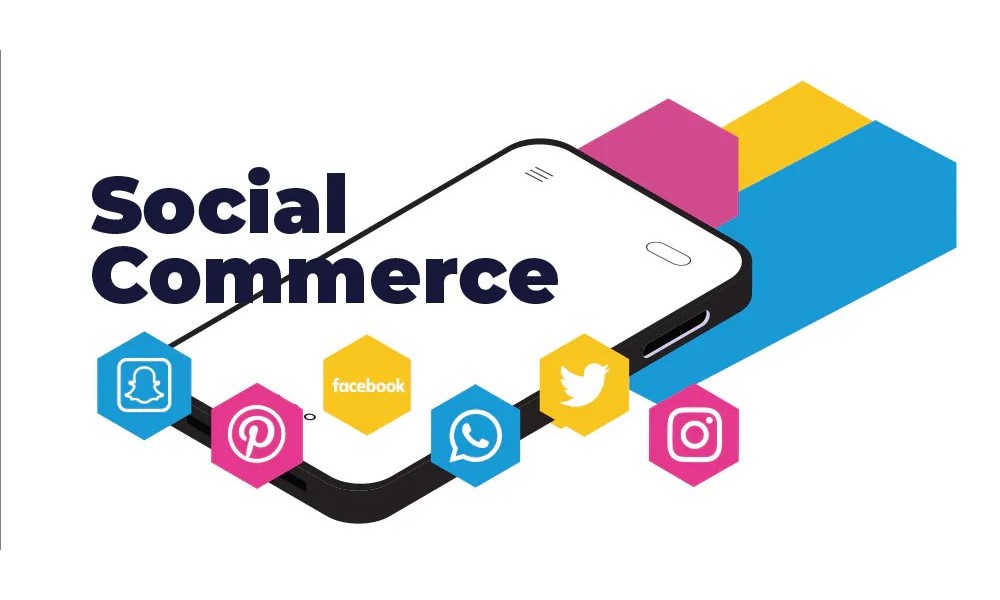
Social commerce initially emerged in the early 2000s as platforms sought ways to monetize user interactions. Over time, social media evolved from being merely places for connections and conversations into powerful tools for product discovery and transactions. In recent years, this evolution has accelerated, with platforms adding features such as shoppable posts, live-stream shopping, and influencer collaborations. These innovations have made it easier than ever for consumers to make purchases directly through social media.
Early Days of Social Commerce
The evolution of social commerce dates back to the mid-2000s, when platforms like Yahoo introduced the idea of blending shopping with social interactions. In 2005, Yahoo’s “Pick Lists” allowed users to recommend products, share reviews, and create shopping lists. This early experiment showed that consumers trusted recommendations from peers and valued the ability to interact with products before making purchasing decisions. The success of this feature sparked interest in integrating shopping directly into social platforms.
By the late 2000s, social media sites such as Facebook began exploring ways to integrate e-commerce. In 2007, Facebook introduced its Marketplace, allowing users to buy and sell items within their communities. Although this early version of Marketplace didn’t immediately take off, it laid the foundation for future social commerce innovations. Facebook’s subsequent development of tools like the “Like” button in 2009, which helped brands track consumer preferences, showed how platforms could better understand user behavior and improve marketing strategies.
The Rise of Influencers and Live Commerce
One of the most significant developments in social commerce has been the rise of influencer marketing. As social media became more popular, influencers gained trust within their communities and built large, engaged audiences. Brands quickly saw the value of partnering with influencers to promote products more authentically and relatably. Instead of relying on traditional ads, companies could reach consumers through influencer endorsements, which felt more credible and personal.
Live commerce has also played a major role in shaping modern social commerce. Platforms like Instagram and TikTok launched live shopping features, allowing influencers or brand representatives to demonstrate products in real-time. This interactive approach lets consumers ask questions, see product details, and make instant purchases. Live commerce has been especially effective for fashion, beauty, and tech products, where customers benefit from seeing live demonstrations.
McKinsey reports that live commerce in the U.S. is expected to grow rapidly, particularly among younger consumers who prefer interactive shopping experiences. This trend has already exploded in China, where platforms like Taobao Live generate billions in sales annually through live-stream shopping. Although the U.S. market may evolve differently, it’s clear that live commerce will continue shaping the future of social shopping.
Social Platforms Driving Commerce Growth
In recent years, major social media platforms have introduced numerous features to improve the shopping experience. Instagram launched its “Shop” feature, enabling brands to create storefronts directly within the platform. Users can browse products, view descriptions, and make purchases without leaving the app. Instagram also introduced “Shopping Tags,” allowing brands and influencers to tag products in posts, simplifying the purchasing process for consumers.
Similarly, TikTok introduced “TikTok Shopping,” integrating with platforms like Shopify to help merchants sync product catalogs and create mini storefronts. The platform’s focus on short, engaging videos makes it an ideal space for product discovery, especially for younger audiences. Pinterest, another significant player in social commerce, rolled out its “Shopping List” feature, which saves shoppable pins and alerts users to price changes. These innovations highlight how social platforms have evolved from simple marketing tools into full e-commerce ecosystems.
Social commerce extends beyond product discovery. It provides platforms with valuable first-party data, allowing them to target ads effectively and increase conversions. By handling transactions directly, platforms can also collect a portion of the sales revenue, creating a new income stream. This combination of social interaction and shopping benefits consumers with a seamless experience and offers businesses higher engagement and sales.
Impact of the Pandemic on SC Growth
The COVID-19 pandemic played a significant role in accelerating the evolution of social commerce. With physical stores closed or limited in capacity, consumers turned to online shopping in greater numbers than ever before. This shift forced businesses to adapt quickly, finding new ways to engage customers and offer safe, convenient shopping options. Social media platforms responded by enhancing their e-commerce capabilities, offering tools like Facebook Shops and Instagram’s live-stream shopping features.
As the pandemic reshaped consumer behavior, many of the changes have become permanent. Consumers now expect the convenience of shopping directly from their social feeds, and brands must continue to innovate to meet these expectations. For instance, brands have increasingly invested in building out their social commerce presence, recognizing that these platforms offer an opportunity to reach new customers and grow their business. For many companies, social commerce has become a core part of their digital strategy.
The Future of Social Commerce
Looking ahead, social commerce will likely see more advanced integrations between social platforms and e-commerce. Technologies like augmented reality (AR) and artificial intelligence (AI) will increasingly shape the shopping experience. AR tools will let users virtually “try on” products, like clothing or makeup, from their homes. AI will enable brands to offer personalized recommendations, helping consumers find products they love more easily.
Social commerce will likely grow as younger generations adopt it as their preferred shopping method. A 2021 Forrester survey revealed 61 percent of U.S. adults under 25 have made purchases through social platforms, a trend that is expected to increase. Brands that neglect social commerce risk falling behind as consumer preferences shift toward more engaging shopping experiences.
In conclusion, social commerce has fundamentally changed how consumers shop online. As platforms add new features and technologies, businesses must adjust their strategies to stay competitive. The combination of social interaction and seamless shopping offers brands a unique opportunity to engage consumers, build loyalty, and increase sales. For companies aiming to succeed in the digital age, embracing social commerce is essential.

